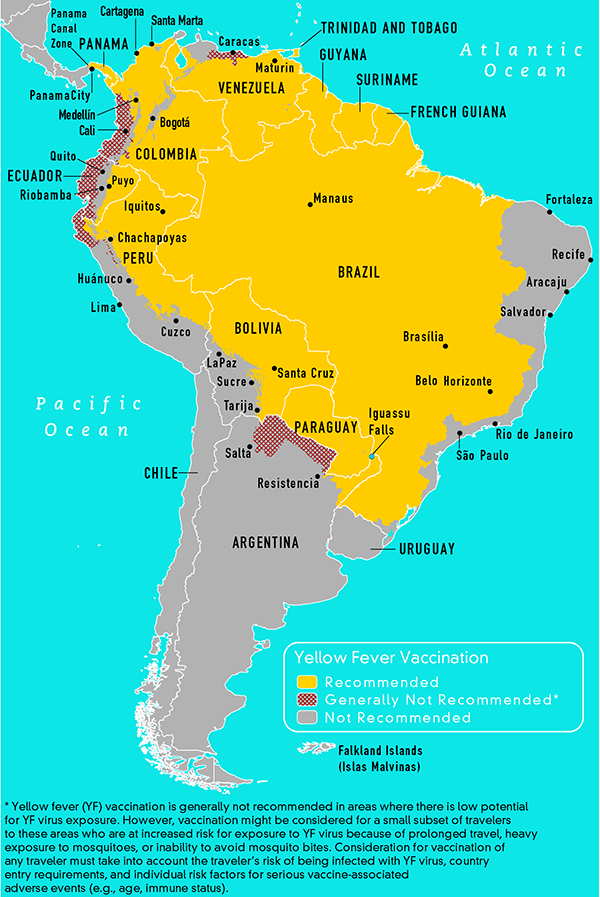Vehicle reliability is not all the traveler needs for a successful expedition. Below the US border you will find locations with high humidity, extreme heat, overexposed food, wild animals, bacterial rave parties in food and water, border guards eager to find something wrong in your vaccination documents and hoards of hungry mosquitoes ready for a royal blood feast. For all these reasons, it is necessary to take a few cautions before launching into the unknown...
[NOT-SO-VEXING] VACCINES
Obtaining the required vaccines for each and every country you will visit is a complete must. The Center for Disease Control and Prevention has a very neat area in their website dedicated to traveler's health. Under the "Destinations" tab, you will find the vaccines that are recommended/required for each and every nation on Earth. For the entire PanAmerican route you will need these...
-Routine: MMR/DPT are good examples. DPT is once every ten years.
-Hepatitis A: usually transmitted through people/food/water. Vaccine lasts for many years.
-Hepatitis B: transmitted through blood and intimate contact. Vaccine lasts many years.
-Typhoid: transmitted through contaminated water. Can be administered in capsules!
-Yellow Fever: transmitted through mosquitoes. You will get an official sealed certificate.
-Rabies: if you are going to be working in close proximity to animals. Just in case.
 |
| If you are going to visit any of these places, DO get the Yellow Fever vaccine! |
Every state has at least one travel clinic, which you can find in the CDC's online directory. You show up, fill out a form, wait for your turn and tell your assigned doctor where you are going. I got a very cute young lady who gladly sourced all the vaccines in the blink of an eye and administered them with minimal pain. She also gave me a refrigerated 4-pack of Typhoid pills –much better than adding a fourth vaccine to my poor arm-, which I have to take once every other day before the trip.
EYE, EYE CAP'N!
Anyway, after many years of loyal service, I broke my glasses one morning. I fumbled around my desk to find my spares, but soon found out they were so old my vision had changed since I made them almost six years earlier. I called my optometrist back in Spain, who emailed me a copy of my lens graduation so I could get my glasses faster. I rushed to the local optometrists and was attended with exquisite service; and after a quick test I found out the Spanish records were right on the spot. I opted for a set of photochromic lens (also known as transition lens, they darken in the presence of UV) mated to a sturdy, lightweight, fully-rimmed metal frame. Besides being highly practical, they did not have to attract much (unwanted) attention or make me look like a millionaire, so I chose a cheap, simple design. Now I have glasses and sunglasses, all in one!
FROM FIRST AID TO HEALTH KIT
What I did was to opt for a mid-low range first aid kit with the basic bandaging items, aspirins, latex gloves, scissors, tweezers and fasteners. It is packed in a nylon flexible bag, so I can squeeze it anywhere in my luggage or in the car. This kit was an excellent start, but I am sure it will prove rather limited eventually... for this reason, I am adding the following items:
-Insect repellent: not for the "eww" factor, but because of the many diseases these carry!
-Hydro-cortisone: in my cross-USA trip, I got bitten by fire ants and it was hell. Never again.
-Thermometer: a basic, run-of-the mill will do. A simple design can be disinfected quickly!
-Rubbing alcohol: whether it is as fuel or as antiseptic, it's always a good choice.
-Antibiotic: to treat any internal infections should they ever happen.
-Antibiotic balm: I used it once in a deep cut while wrenching, and did wonders.
-Thrombocid gel: for any bruise/hit I may take. Hopefully by things, not people!
-Diarrhea pills: you never know what that ice they put in your drinks will do to you!
-Painkiller: I chose Espidifen, a Spanish market equivalent of Ibuprofen.
-Five-hour energy: small, and a good last boost to get to safety in case of an emergency.
-Malaria medication: highly recommended by the Center of Disease Control in those areas.
-Water purification tabs: I cannot stress enough how important safe, clean drinking water is.
With all these medications, the kit fits in a flexible bag that can be squeezed anywhere in the car. While I have heard of Americans overblowing the proportions of food poisoning in Latin America, it does not hurt to be well prepared. I shall evaluate how useful this kit has been at the end of the journey.
Up next... a surprise visit to a very unique place in Kansas before my departure!



No comments:
Post a Comment